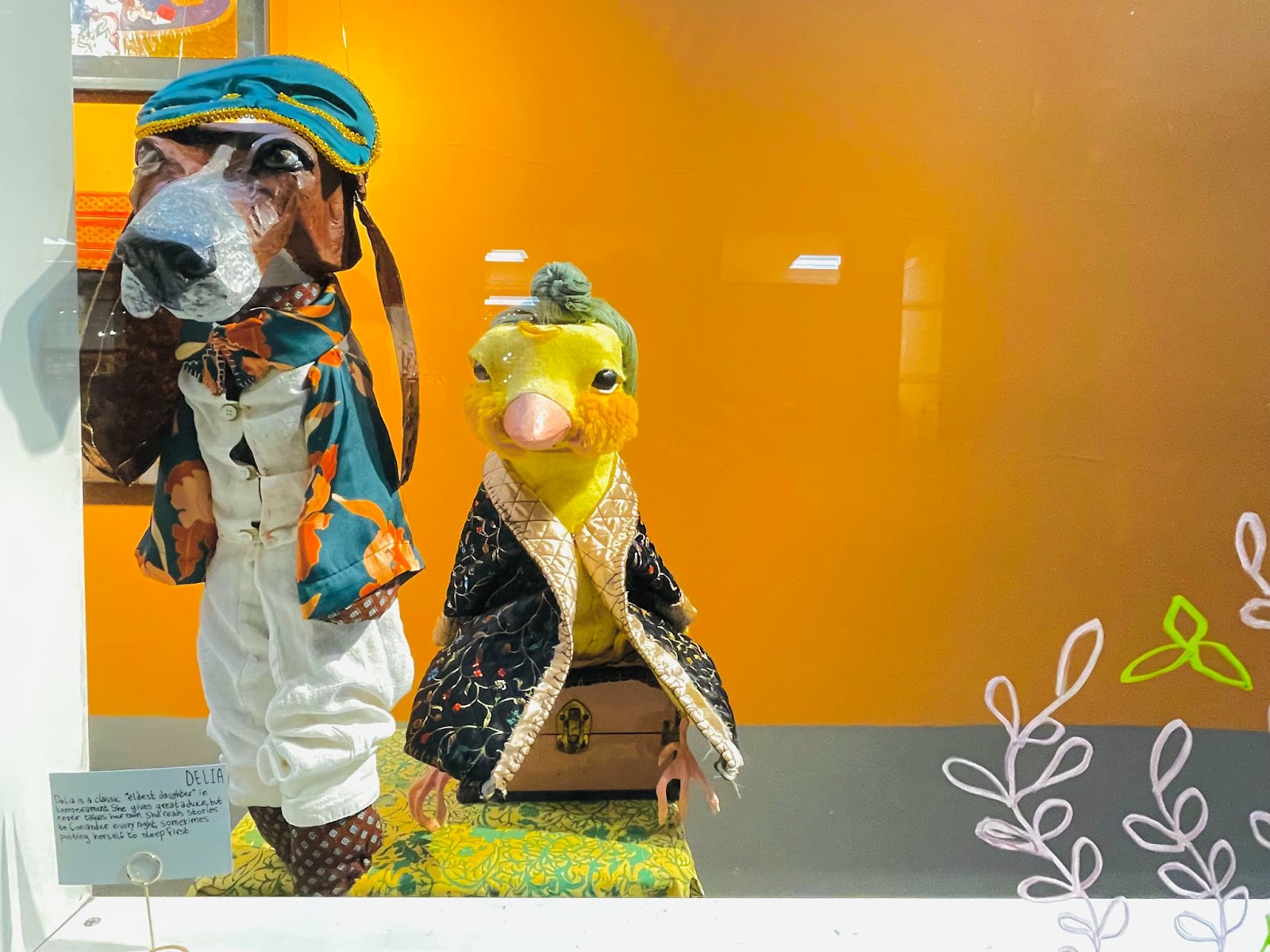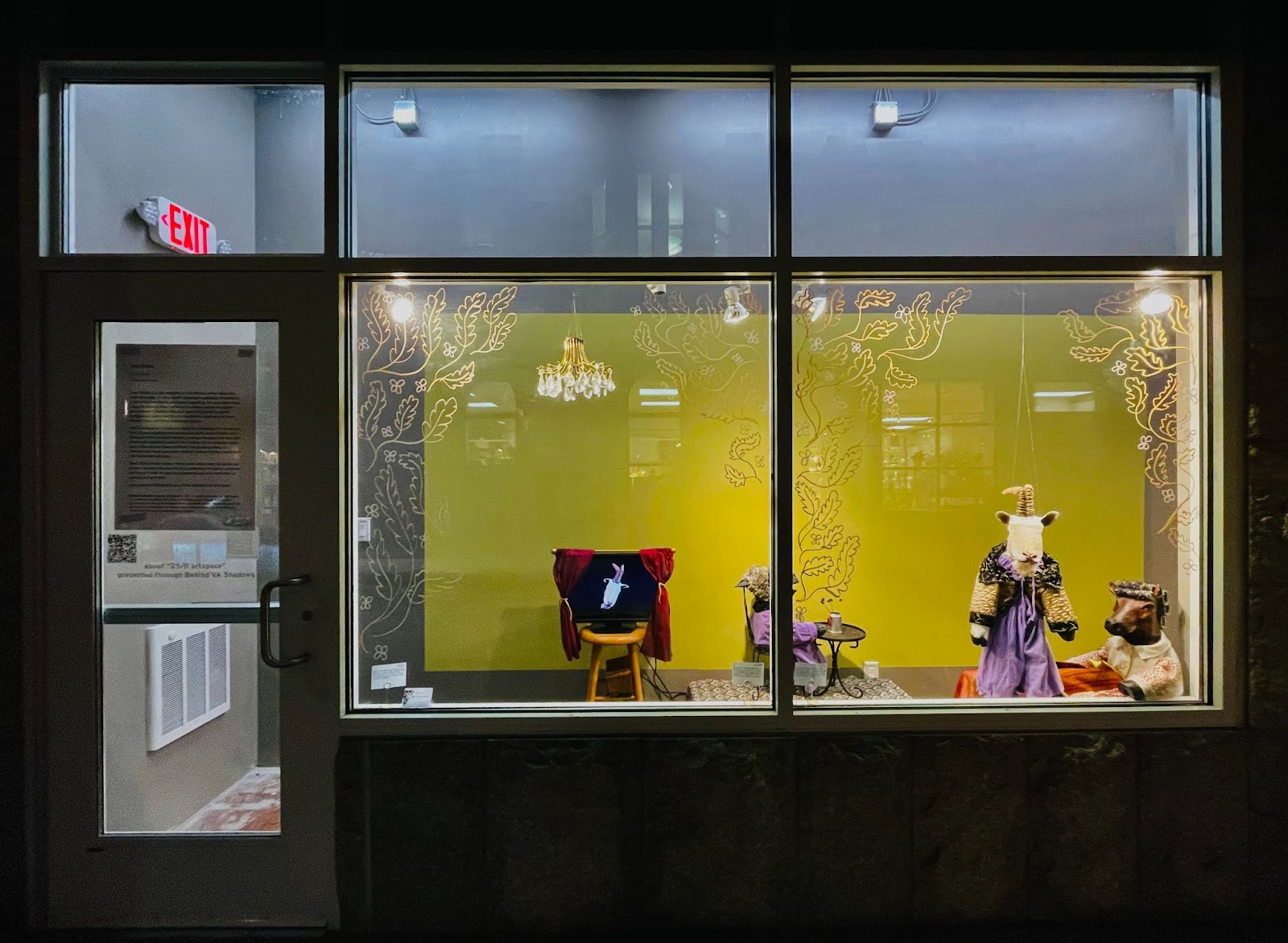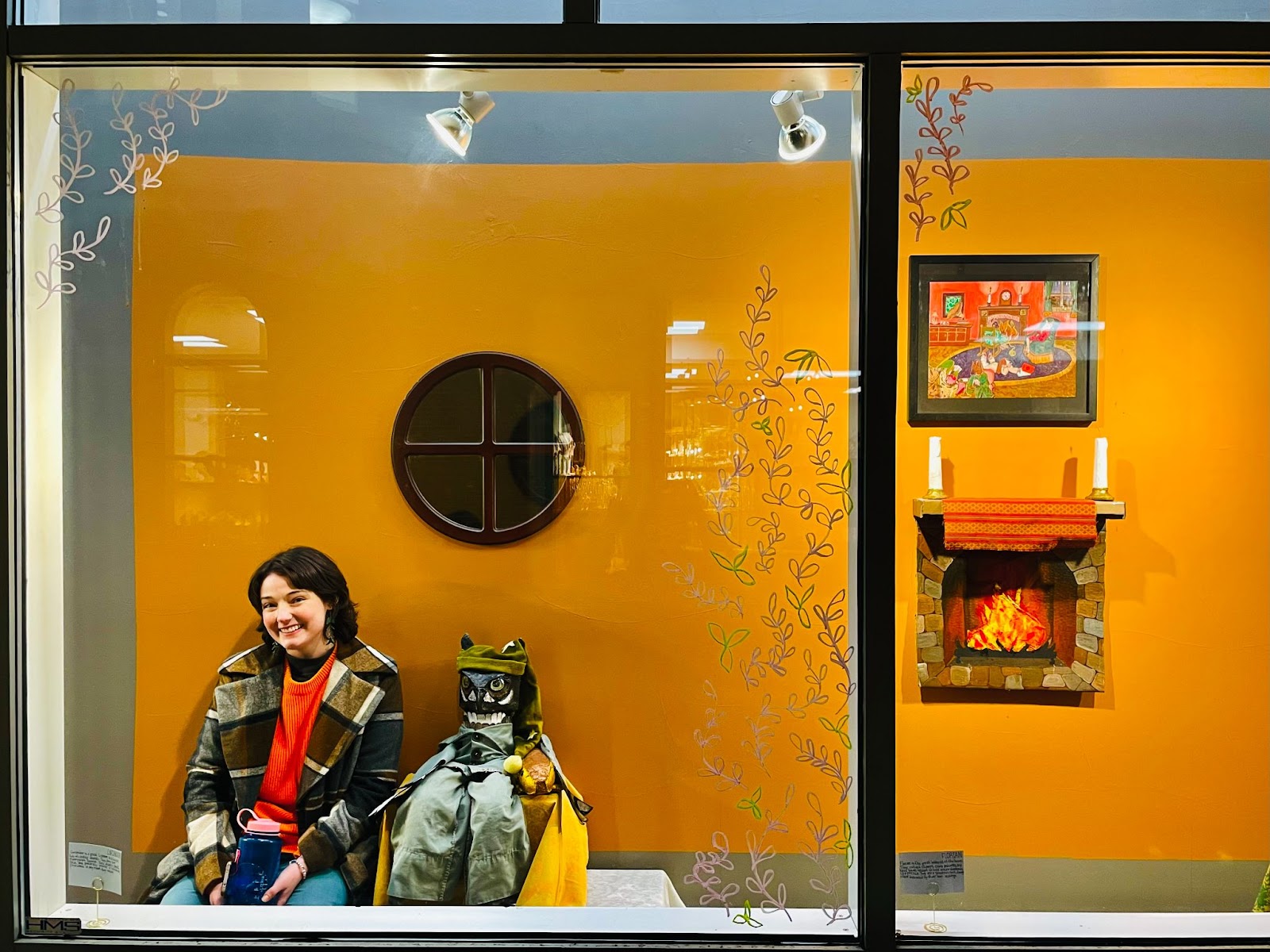The Harvard Square Business Association, in partnership with Intercontinental Management, is pleased to welcome “Tired Clichés”, the latest installation at the 25/8 artspace project located at 2 Linden Street in Harvard Square.
Behind VA Shadows presents Isola Murray’s solo exhibition which is on view through February 4th. Curated by Yolanda He Yang, the exhibition showcases a series of idiom-inspired sculptures and installations, transforming the gallery space into a temporary stage set. In this space, the theatrical intertwines with the familiar; through these unconventional creatures, the exhibition shifts our focus from performance to rest. During this transitional time of the year, Tired Clichés invites viewers to take a step back from work, contemplate on rest, and embrace the cozy atmosphere brought forth by the show. Behind VA Shadows will host a drop-in Tea Party with Tired Clichés on Saturday January 25, 2025 from 3-6pm as part of the restful-themed public programming.

Denise Jillson, executive director of the Harvard Square Business Association, commented, “We are so thankful to Intercontinental Management for continuing to foster the arts in the public way. This popup gallery exhibits beautiful artwork that is to be enjoyed “from the street” in an unexpected location in Harvard Square.”
In Yang’s curatorial vision, activating the public gallery space to introduce different types of visual experiences has always been an important part of exhibition making. In this show, Murray creates a fantastical, whimsical, and serendipitous viewing experience. Specifically, Yang emphasizes the emergence of new life and stories from old cliches and familiar characters, through the artist’s intervention.

Derived from animal characters that bear human personality traits in idioms, the creatures of Tired Clichés are revealed to be off-duty from enacting references. The specific scenes addressed by the artist break away from the routine work of performing meanings; instead, the characters in this new context sink into banal yet soothing moments of rest. Therefore, the exhibition space turns into a site of respite, making room for these moments of rest. Working with mixed media, Murray employs found objects and recycled materials for the creation; at times, coming into being in three dimensional forms becomes unpredictable, adding a layer of uncanny to the manifestation of cuteness. A conscious blend of two and three dimensions unfolds in the exhibition. Often beginning with two-dimensional imaging, the artist’s practice strikes an intricate balance between two and three dimensionality. The creatures occupy different spatial planes within the shallow foreground: some are resting against the wall, some are coming close to the window, and some are even using the windowsill as an armrest. A flattening of background accentuates the three dimensionality of the creatures, reinforcing the imaginary, vivid quality of Murray’s storytelling. Nonetheless, two dimensional devices, such as a painted hearth, bathroom sink, toilet, and bathtub, are always making an attempt to emerge into three-dimensional space; their materiality and volume are visible. Immediately, the illusion embodied by these images is quickly juxtaposed by functional pieces of furniture, such as a chandelier, a TV, and a mirror. In addition, the artist superimposes a layer of floral patterns onto the window, highlighting the existence of glass as a pictorial plane as well as a barrier that governs the viewing experience.

As an art maker who began their journey by making art for family and friends, Murray is interested in the interactive capacity of art. Her museum working experiences also inform her approach to artmaking by creating entry points through familiar objects and scenes that are accessible to the public. Parallel to the creatures and the theme of rest, Murray took a long preparation process to develop the exhibition, during which the artist spent time to decompress and reflect. The process and the experience of having fun, agreed by both Murray and Yang, are essential to the making of the exhibition. Further, friendship and collaboration are also celebrated in this exhibition; beyond the physical space, Murray brought in Tristan Calvo-Studdy and Maddie Feldman to create a video work for the exhibition and Erin Rosengren to create a textile design. Along with labor and rest, Tired Clichés also brings the collaborative nature of exhibitions to the foreground as an equally important reminder for viewers.
